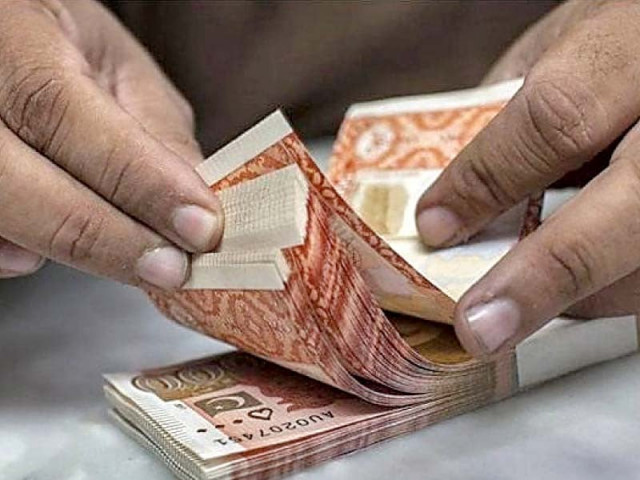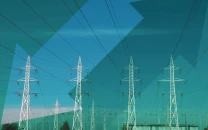Capitalising on benefits of inclusive wealth approach
Lack of awareness, weak capacity deprive Pakistan of environmental advantages

Pakistan developed its first-ever Inclusive Wealth Report (IWR) in June 2021 in line with the global demand to adopt the inclusive wealth paradigm imperative for sustainable development.
Inclusive wealth involves all sectors of economy and takes a holistic approach by considering all relevant indicators of economic growth.
Growth measurement in Pakistan is currently limited to only the gross domestic product (GDP), although advanced economies include all the three growth indicators (human capital, produced capital and natural capital) while measuring the economic growth.
The world has now embarked on sustainable development which has three important pillars – social, economic and environmental development, and is defined as a development process that takes care of the needs of current generation without compromising the needs of future generations.
Therefore, the IWR provides valuable insights into social (human capital), economic (produced capital) and environmental (natural capital) development and ensures that the pre-requisites of sustainable development are met.
Globally, the process of inclusive wealth kicked off with the launch of the first-ever IWR by the United Nations Conference on Sustainable Development (UNCSD) during Rio+20 held at Rio de Janeiro, Brazil in 2012.
The growth and development paradigm has moved from simple development in the 1960s and 70s to environmental development in the 90s to sustainable development in the 2000s and now to inclusive wealth.
So far, over 140 countries have developed their IWR while others are working on it. Pakistan launched its first IWR on the eve of World Environment Day 2021 with the support of the UN Environmental Programme (UNEP). Two years down the line, the country is yet to see implementation of the IWR to capitalise on its benefits.
Pakistan is gifted with tremendous natural and human capital that can help transform the produced capital into increased productivity but so far environmental considerations have not been properly integrated into the planning and development strategies.
The IWR helps in analysing the health of the economy of any country, which can easily be linked to economic progress through changes in natural capital that greatly influences the nation’s economic and productive base.
Pakistan is supplying top-rated human capital to advanced countries of the world such as the US, European states, the UK, Canada, Australia and Japan, assisting them in enhancing their produced capital through various immigration programmes. However, the same human capital is not performing as effectively at the national level as in the overseas markets.
The underlying reason may be the respective capacity, work environment and institutional strength outside Pakistan. Similarly, the produced capital except the abundant raw material (cotton, rice, etc) is not in line with the international standards due to poor capacity, redundant technology and resources. Consequently, the natural capital is experiencing increased pressure such as over-grazing, forest and vegetation cutting, increased fishing and hunting.
The greatest opportunity to harness the benefits of natural capital is to earn carbon credits as natural resources are still intact and have not been exploited for the carbon stock that they store.
Mangrove forests in Sindh have been pledged for 60 years under a carbon credit programme and the first tranche of over $14 million has already been received by the provincial forestry department.
The second tranche will be of $25 million for the next five years and so on as the credit amount will increase every five years for enhanced carbon stocking over the years.
Almost 80% of the amount will go to the local community and 20% will be used by the Sindh forest department as its administrative cost.
This amazing achievement of the Sindh forest department is a great model for others to follow in harnessing benefits of the natural capital as the vegetation and forest stocks are still there.
This way, the natural capital can very effectively contribute to the national economy that too in the much-needed foreign currency.
The concerned ministries and departments at the federal and provincial levels must now include the natural capital as a serious revenue-earning avenue towards inclusive wealth.
Unfortunately, the lack of awareness about this great and innovative window of opportunities coupled with weak capacity at the national and provincial levels is depriving Pakistan of the benefits of the available natural capital in a bigger way.
Pakistan has already completed mapping under the Reducing Emissions from Deforestation and Forest Degradation (REDD+) study for the provision of an enabling environment for earning carbon credits from the natural capital.
The Ministry of Climate Change is implementing the REDD+ readiness project with a financial grant from the Forest Carbon Partnership Facility (FCPF) of the World Bank.
REDD+ has developed the enabling environment instruments for various landscapes of Pakistan including the coastal areas, high mountainous regions, hot and cold plains and deserts. It is now essential to implement REDD+ for earning carbon credits and undertaking other sustainable development initiatives.
The writer is a PhD in Natural Resource Management and has authored the first IWR for Pakistan in 2021
Published in The Express Tribune, June 5th, 2023.
Like Business on Facebook, follow @TribuneBiz on Twitter to stay informed and join in the conversation.


















COMMENTS
Comments are moderated and generally will be posted if they are on-topic and not abusive.
For more information, please see our Comments FAQ